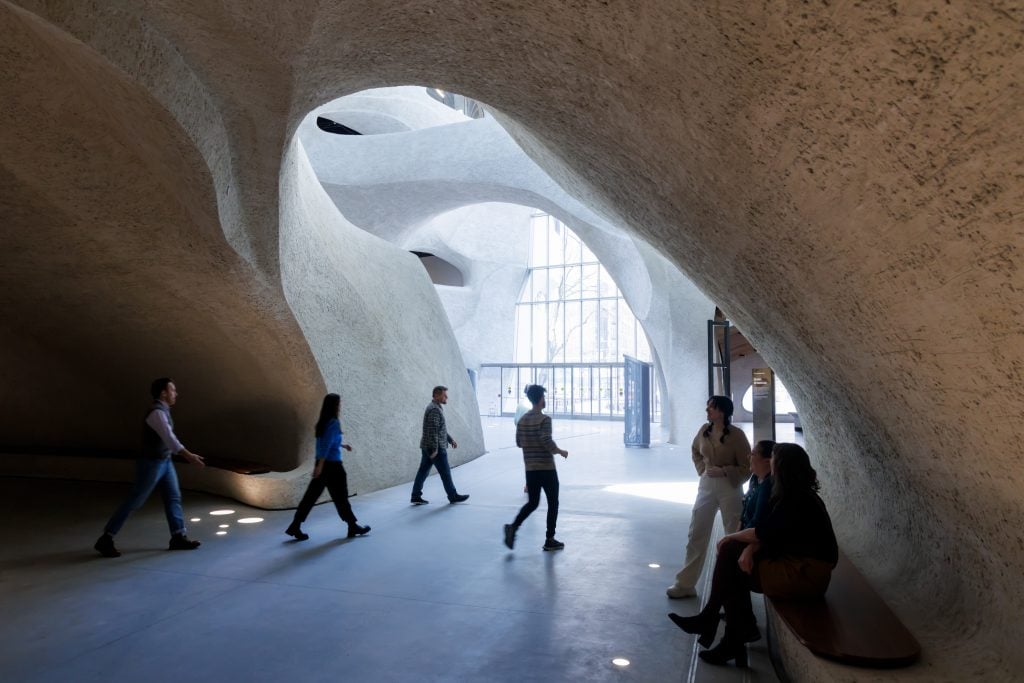Museums & Institutions
The American Museum of Natural History Will Remove All Human Remains From Display, Vowing Policy Change
The museum holds about 12,000 human remains in its collection.

The museum holds about 12,000 human remains in its collection.

Adam Schrader

The American Museum of Natural History in New York City will remove human remains from its displays and has vowed to make policy changes after recent reports raised concerns about legality and ethics of their acquisition.
Erin Thompson, a professor of art crime at John Jay College of the City University of New York, had investigated the museum’s collection of the remains for a report published by Hyperallergic on October 15.
The removal was announced in a news release before Thompson’s report was published. The bones will be taken out of the museum’s displays over the course of the next eight weeks and the policies will be updated to recognize the importance of returning human remains.
Sean Decatur, the museum’s recently appointed president, said the museum holds the remains of about 12,000 individuals in its collection and there are currently 12 cases displaying them. He called the removal the “right course of action.”
“The museum no longer collects human remains. Non-invasive research on the collection is permitted only after community consultation and consent, and the moratorium on destructive analysis is continuing,” the news release reads. “We commit to the removal of human remains from public display, while continuing to display casts where appropriate to further the museum’s education mission.”
Decatur said discussions about the museum’s collection began before he was appointed in April and he has called the changes just “initial steps” in addressing the problematic remains. The human remains in the collection range from instruments and beads made from human bone to skeletons and mummies.
Thompson said she spent months investigating the museum after receiving an anonymous tip from a staff member and that she was surprised by the lack of publicly available information about the remains.
“They won’t tell you any information about just who these individuals are,” Thompson told NPR. “Where did they come from? How did they get these remains?”
About 26 percent of the remains belong to Native Americans from within the United States with about 1,200 of them housed there by the federal government, Decatur said. Another 2,200 skeletons are managed by the museum’s cultural resources office in accordance with the 1990 Native American Graves Protection and Repatriation Act, which requires the return of such remains to Native American communities.
To date, the museum has returned about 1,000 such remains and another 200 internationally.
Thompson added that museums like the AMNH had collected and used human remains for scientific research rooted in eugenics and racism: “They were looking for physical proof of the superiority of white people and they didn’t find it, but that meant they just kept looking.”
Decatur agreed with Thompson, stating that the museum must acknowledge that “no individual consented to have their remains included in a museum collection” with the small exception of those who bequeathed their bodies to medical schools for continued study.
“Human remains collections were made possible by extreme imbalances of power,” he said. “Moreover, many researchers in the 19th and 20th centuries then used such collections to advance deeply flawed scientific agendas rooted in white supremacy—namely the identification of physical differences that could reinforce models of racial hierarchy.”
Decatur specifically addressed a recent report in The New York TimesThe New York Times, highlighting that some of the remains may have belonged to enslaved African Americans.
“These remains were removed from a burial ground in the Inwood neighborhood of Manhattan during a city road construction project in 1903–04 and accepted into the collection,” Decatur affirmed.
“Enslavement was a violent, dehumanizing act; removing these remains from their rightful burial place ensured that the denial of basic human dignity would continue even in death. Identifying a restorative, respectful action in consultation with local communities must be part of our commitment.”
Decatur told museum staffers that the remains will further be discussed at an all-staff meeting, which was scheduled for today. It was not immediately clear how the meeting went.
Thompson has since shared a database she created to help people discover whether the remains of their ancestors are in the museum’s collection. She said she has found information for about 10,500 of the remains.
More Trending Stories:
Four ‘Excellently Preserved’ Ancient Roman Swords Have Been Found in the Judean Desert